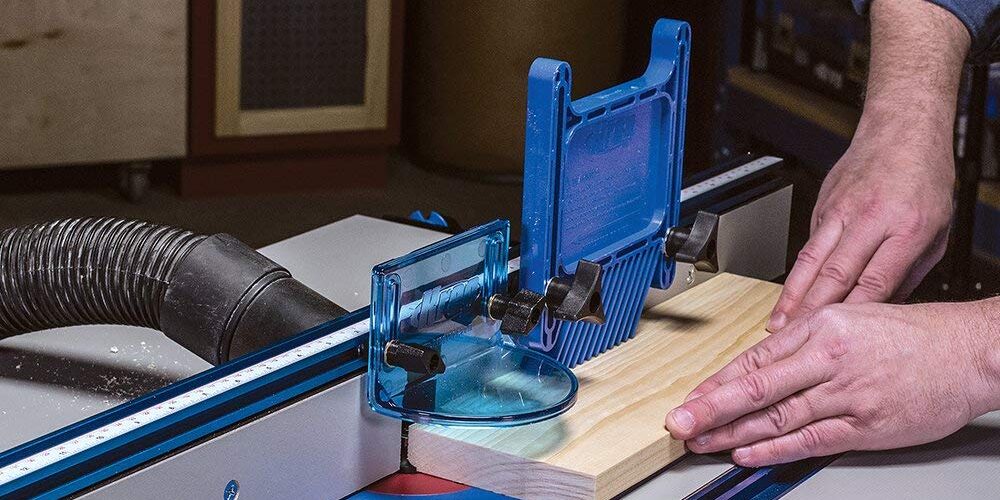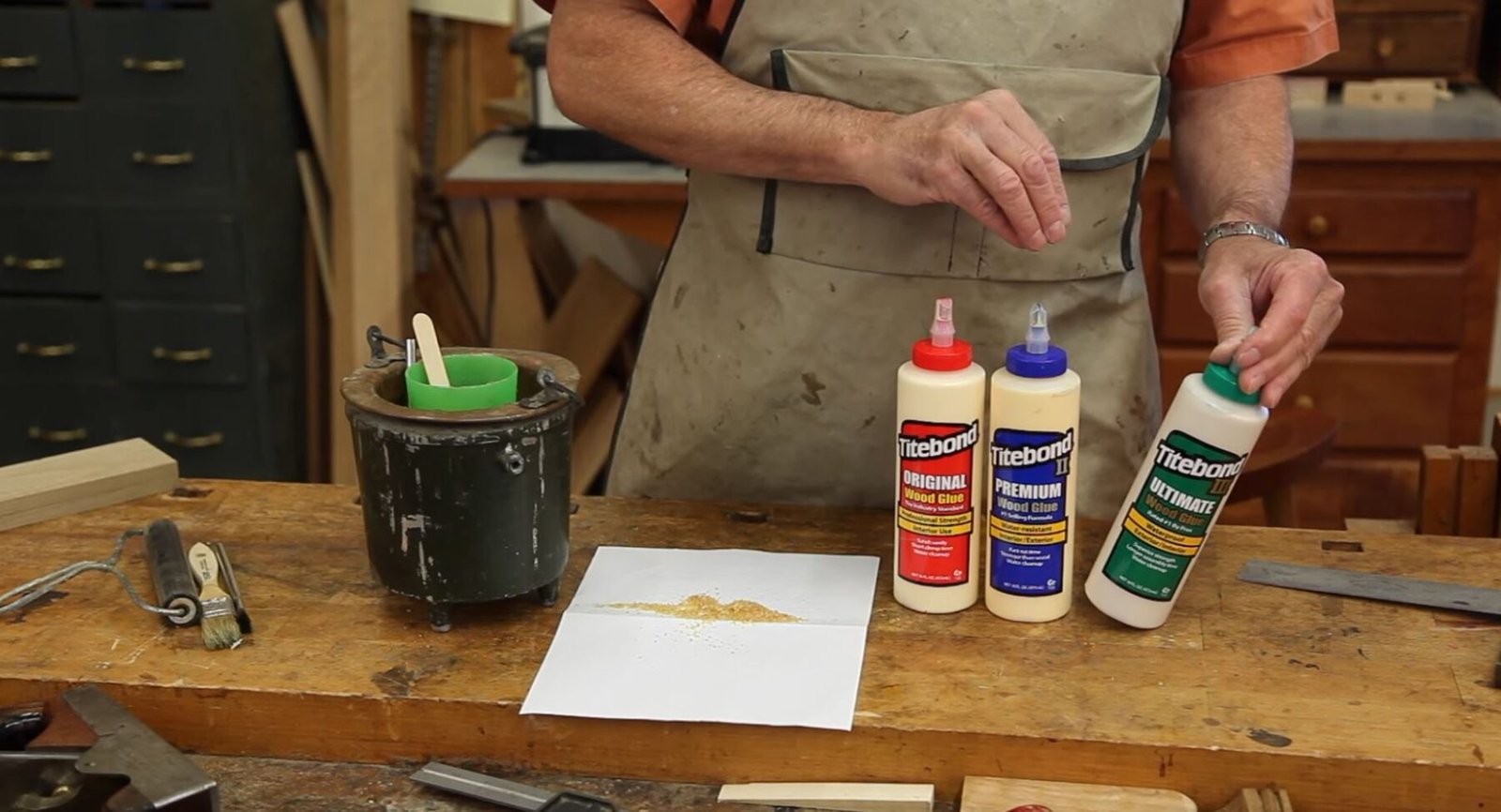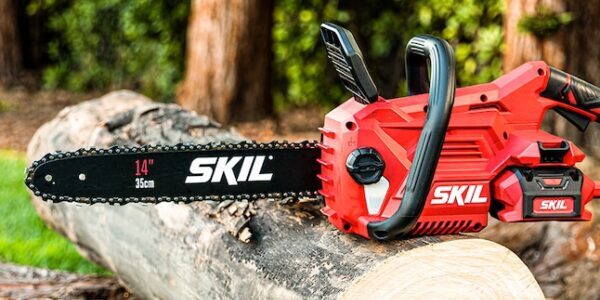The router revolutionized home shop woodworking. It’s an incredible tool. It’s capable of doing anything from edge-shaping to making sliding dovetail joints. It didn’t take long for innovative woodworkers to discover that mounting their router in a table adds a whole new dimension to an already useful tool.
No time to read the whole thing? Here are my picks:
Best Overall Floor Table
Best Benchtop
Value Benchtop
Budget Benchtop
A router table offers several benefits:
- Safety – Router table routing is safer than hand-held routing.
- Versatility – With a router table, you can do things that are impossible to do with a hand-held router. You can put an edge profile on a narrow stock or small parts, make raised-panel doors, lock miters and drawer joints.
- Stability – Freehand routing is inherently unstable. The slightest tip or bump, and you’ll be starting the job over. A router table and fence support and guide your stock for a stable ride over the cutter.
Today there are hundreds of manufactured tables that, when combined with a one to three-hp router approach, will come close to the capabilities of a full-sized shaper.
While no table is perfect, this article will help you to choose an excellent table for your router.
Table of Contents
Benchtop or Floor Model
Featherboards, bit guards, and dust collection provide you a higher quality of safety than with a router alone.
Router tables come in two basic types: benchtop and floor model.
Floor models are my first choice. They offer the size and stability you need to handle large stock and big routers.
The benchtop models are small and light enough to be both portable and storable. If you really need a compact, storable router table, then a benchtop router table is the right choice. They’re also great if you know you will be working with small stock.
A word of warning: A benchtop router table set on a typical workbench is uncomfortably high. You want your router tabletop height to fall in the 34 to 40-inch range. Unless you have a bench that’s under 25 inches tall, you will need to build a separate bench for your benchtop router or set it up on a pair of low sawhorses.

The Fence
The fence is the heart of any router table system. Here’s what I think makes a great fence:
One-piece vs. two-piece fences
A one-piece fence is a my go-to choice. By one piece, I mean a fence with the main body made from a single piece of metal. A one-piece fence guarantees a continuous surface in place for guiding your stock. Two-piece fences are modeled after shaper fences, where the infeed and outfeed halves move independently. This is practical on a shaper where the cutters remove 1/32 inch from the stock width with each pass. However, on a router table, this is a big hassle because most of your routing tasks require no offset. Getting a two-piece fence is perfectly aligned can be a chore.
Floor model router tables have larger tops and longer fences to better support and guide large stock.
Dual-position vs. single-position fences
I prefer the flexibility of a dual-position fence. A dual-position fence clamps to the edges of the tabletop, allowing it to be positioned on either side of the router. This is a significant advantage on tables with offset router mounts. It enables you to work with a shallow or deep setback depending on the amount of support your stock requires.
A single-position fence is secured to the top through slots or by metal T-slots. It can only be placed on one side of the router.
Edge clamps allow you to position the fence anywhere on the table. A one-piece main fence doesn’t have the alignment hassles of a two-piece fence. T-slots make convenient attachment points for subfences and accessories.

Subfence
An adjustable sacrificial subfence is a must-have feature. The subfence allows you to adjust the fence opening to accommodate bits of all sizes. With the main fence secure, you can even push the in-feed fence into a spinning bit and create a zero-tolerance opening to eliminate chip-out.
Don’t buy a router table that won’t accommodate a subfence. The best subfence systems are simple to make pieces of MDF that slide along slots in your main fence. Also, a subfence can be optimized to guide long or vertically positioned stock.
A subfence allows you to offset the outfeed fence with shims for edge jointing. Some manufacturers include shims, but you can easily make your own from paper, cardboard or plastic laminate.
T-slots
A T-slot in the main fence works best for attaching subfences and accessories. Some manufacturers cut the T-slot in the subfence, but this kind of subfence is trickier to make yourself.
T-slots in the subfence work great, but in order to make your own subfence, you will need to purchase a specialized router bit. I prefer the easy to make subfence.
Tool-Free Adjustments
The best fence systems use top-mounted knobs to secure the fence to the table. Knobs under the table make changes unnecessarily cumbersome. Subfence adjustments should also be tool-free.
Tool-free adjustment knobs are the only way to go. The last thing you need to keep track of is another screwdriver or Allen wrench.

Dust Collection
Routers create gobs of dust and shavings, so there’s no excuse for a table to come without dust collection. Most models have good dust collection built right into the fence. As long as the fence is near the bit, these designs perform well. Cabinet-style bases offer the possibility of retrofitting a hose in the enclosed cabinet where the chips missed by the fence dust port can be extracted.
The tabletop
The router table top has two crucial but straightforward functions. It must support the weight of a router without sagging and provide a flat, obstruction-free surface to run your stock over. A router-table top’s worst enemy is sag. This creates all kinds of problems because the board you are machining must conform to the dip in your table.
To help prevent a sagging top, remove that heavy router when it’s not going to be used for long periods.
Top material
Router table tops are made from one of three basic materials: metal MDF, phenolic resing.
Phenolic resin is the best choice for a router tabletop. It offers the strength and durability of metal but will never rust or corrode. Phenolic resin is so durable that it’s used in the landing gear of fighter jets and as skids for nuclear missiles on submarines. Unlike MDF, you can set a phenolic top in a steam bath overnight, and it won’t lose its shape or strength.
Metal tops also offer strength and stability. But, steel can rust and requires preventative maintenance just like cast iron, and aluminum is prone to leaving grat metallic streaks on your stock.
Most router table tops have an MDF core. High-pressure plastic laminate (p-lam) applied to the top and bottom of a thick core makes the best MDF tops. The p-lam provides a slick surface and dramatically increases the strength of the MDF core.
Moisture is a real problem for MDF. Get it wet, and it’s ruined, and long-term exposure to humid conditions can cause MDF to swell and weaken. This leads to sagging over time.
The best MDF tops are at least 1-1/16 inch thick and faced on both sides with high-pressure plastic laminate for a slick, durable, sag-resistant surface. Vinyl T-molding protects the raw MDF edges and radiused corners protect you when you back into them.
Most manufacturers use vinyl T-molding to protect the edges of MDF tops. This is a good thing, but it can cause a severe problem.
Vinyl T-molding has a downside. It caused splits in a number of tops I’ve used. These splits flared the edges of the top, ruining the flatness of the surface.
The T-molding can cause the MDF to split and flare the edges, which lead to a less-than-flat top. I have no idea why this problem appears on some tables but not on others. I haven’t encountered this problem with the tables I’m recommending here.

Tip: No matter what kind of top you buy, put a straightedge on it right away. If it sags in the middle, send it back and get a new one.
Offset router mounts
Routers are either mounted dead center on the table, or they are offset to the front or back of the table. Offset router mounts are a real advantage when combined with a dual-position fence. For most routing operations it’s good to have the router positioned close to the operator. It makes feeding the stock and adjusting the router easier. Occasionally, you need extra support for raising panels or edging wide stock. With an offset, the router can flip the fence to the other side of the table, giving you additional table support.
An offset router mount, when combined with a dual-position fence, allows you to choose the amount of table support between you and the router depending on which side of the bit you mount the fence.
Direct-mount vs. mounting plates
Direct mounting the router to the top creates an uninterrupted surface free of catch points caused by a mounting plate. Direct mounting also requires a much smaller hole, which results in a stronger top. On the downside, it’s a hassle to remove the router for hand-held work.
Some router tables use a direct-mount where the router is fastened directly to the tabletop. Others have router mounting plates that allow you to lift the router out of the table for bit changes and handheld operations.
Mounting plates allow you to easily lift the router and mounting plate out of the table for bit changes and handheld work. On the downside, you need to level the plate with the top, and the large cutout can weaken the top.
If you don’t mind dedicating a router or a router base to your table, we think a direct-mount top has several advantages over mounting plates. It’s a stronger, smoother top because there’s no large cutout for a mounting plate which weakens the top and there’s no mounting plate to level flush with the top. On the downside, removing te router for handheld work requires unscrewing the base from the top. Thet’s why it’s best to devote a router or an extra-base to a direct-mount table.
Mounting plates replace the base plate on your router. The router is attached to the mounting plate, which in turn hangs in a rabbeted hole cut into the table’s top. This system makes it easy to lift the router and mounting plate out of the table for bit changes and handheld work. If yours is a one-router shop, a mounting plate is what you want.
The best plates are made from metal or phenolic resin to resist sagging. Plates should fit flush or have levelers.
Predrilled or DIY router mounting
Predrilled plates eliminate the change of screwing up your mounting plate or top with misplaced holes. Some manufacturers include a DIU mounting kit while others leave you to go it alone. If it’s available, I strongly recommend having the manufacturer drill the holes.

The best base
There are three types of bases; the cabinet, the open stand, and the folding stand. Before I discovered Kreg tables, cabinet bases used to be my first choice for floor and benchtop models. Kreg somehow managed to create a base that is open, but as durable as cabinet.
Cabinet-style bases allow you to enclose the area under the table with doors. This makes it easy to add a second dust collection point under the table by simply drilling a new dust port into the back of the cabinet. Made from melamine, a plastic-coated MDF product that weighs a ton, cabinet bases provide a rock-solid foundation for your router tabletop. Doors also help to muffle that screaming router.
Folding stands usually have one major defect – they wobble. You don’t want a router table that moves! If you need a portable router table, I suggest you stick to the benchtop models.
Safety features
I’m serious when it comes to safety. That’s why I was disappointed when I saw big guards and external power switches were sold as accessories. I feel they should be included with every table!
Most manufacturers include a small bit guard attached to the fence. For operations where the fence can’t be used, such as putting an edge profile on a curved piece, this guard is useless. Fortunately, there are many good aftermarket guards available for larger bits and freehand work. I think these guards should be included as standard equipment, so users aren’t tempted to try to work without them to save money.
I feel the same way about external power switches. Should the need arise, you don’t want to be feeling for the power switch that’s hidden under the table. That off button should be right up in front of you.
Big guards are essential for safe handheld routing. Unfortunately, specialized guards are sold as accessories and do not come with most of the tables.
An external power switch adds safety and convenience. It beats the hell out of fumbling around under the table looking for the on-off switch. In an emergency, it becomes an important safety measure.
Summary
According to manufacturers who sell both floor and benchtop models, floor models are always their best sellers with professional woodworkers.
In a nutshell, here are the elements of an outstanding router table:
- Fence – The best fences are made from one-piece metal with tool-free adjustments and easy-to-make, sacrificial subfences.
- Top – Flat, sag-resistant tops are made from phenolic resin, or thick MDF covered top and bottom with high-pressure plastic laminate.
- Base – A reliable, stable melamine cabinet base with upper doors for noise reduction and secondary dust collection.
Routers I’ve worked with
Floor
Krieg PRS1045
Pros: A great table with insanely solid construction. I will probably use this table for the rest of my life. The accessory bundle is a great deal. Very fluid fence.
Cons: Expensive, big, and heavy.
If you can afford it, I recommend getting it with additional accessories.
KREG PRS1045 Precision Router Table System
Features
- 24" x 32" router table top includes a router insert plate with three molded Level-Loc reducing rings
- 36" T-square style router table fence features a micro-adjust wheel for precise setups
- Outfeed anchor has been redesigned for more usable table space and easier removal
- Multi-purpose steel stand is adjustable from 31" to 39" in height
- Includes Router Table Top with insert plate, Router Table Fence and Multi-Purpose Steel Stand. #148166 KREG 4pc Casters Set not included.
Benchtops
Kreg PRS2100
Pros: Remarkable product quality. Large working area. Very stable.
Cons: Expensive. I had some troubles mounting it.
Again, if you got the money, I recommend getting the optional accessories too.
Features
| Part Number | PRS2100K1 |
Bosch RA1181
Pros: Best router table for an amateur that is just starting out. Good adjustment levers and all-around solid benchtop. Enormous working area.
Cons: Initial assembly is complicated. The fence is much less fluid than on the Kregs.
Bosch RA1181 Benchtop Router Table 27 in. x 18 in. Aluminum Top with 2-1/2 in. Vacuum Hose Port
$229.00 in stock
Features
- Benchtop router table design – Features a large aluminum top for extended work area, durability and precision
- Rigid aluminum mounting plate – Pre-drilled for compatibility with a variety of routers and for above-table height adjustment
- Extra tall aluminum fence – Has adjustable faceplates and feather boards to maximize precision and versatility
- Dedicated standard dust-collection port – Fits standard 2-1/2 inch vacuum hoses for debris-free operation to help keep your work area clean
- Easy-to-use adjustable feather boards – Attach to fence and table, providing additional guidance and kickback protection
Skil SRT1039
Pros: Lightweight. Comes preassembled. It’s a solid table that can handle most work. It has a decent fence guard.
Cons: Less stable than other tables reviewed here. Tabletop not as smooth as the Kregs.
Features
- ABOVE THE TABLE ROUTER LIFT: Gain convenient access to router bits with the Above Table Adjustment provided by the SKIL SRT1039 all-inclusive Router Table
- DUAL SIDED INTEGRATED BIT STORAGE: Protect and store router bits with a double door, quick latch integrated bit case. This integrated bit storage saves you time and provides a central location for easy to lose bits
- PRECISION ROUTING: Router tool features a flat laying aluminum miter gauge slot, aluminum mounting plate, router clamp, and two featherboards for durable, accurate routing
- LARGE ALUMINUM FENCE: The tall 16-inch aluminum fence measures 24 inches wide and can handle tall stock with ease, while the fence is complete with adjustable MDF face plates and a starter pin and guard for smooth operation with taller work pieces
- TWO FEATHERBOARDS: Two easy to use, adjustable router edge guides attach to the fence and router table to provide additional guidance and protection against kickback














Thanks David
A very thorough article (like the others of yours I’ve read) and I picked up a couple of good tips. Even though I’m moderately experienced with routers and tables – I have the Kreg Pro large table and the Makita RP2301FC – it’s always good to read someone else’s information and opinion.
Regards Adam